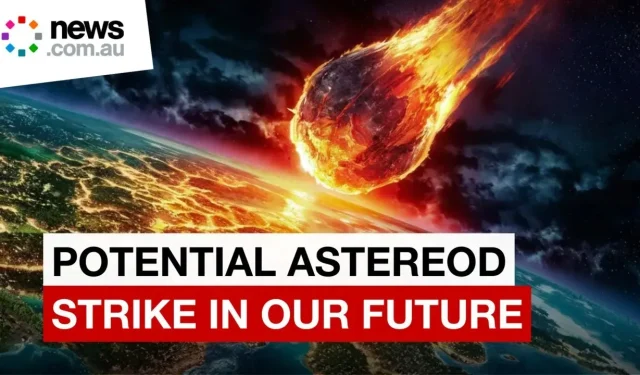The threat of an asteroid collision with Earth is a topic that evokes both intrigue and concern among scientists and the public alike. Recently, the European Space Agency (ESA) has identified an asteroid, designated 2024 YR4, with a 1% chance of impacting Earth in December 2032. This article delves into the implications of this discovery, the measures being taken to monitor the asteroid, and its significance to planetary defense efforts.
Understanding Asteroid 2024 YR4
Asteroid 2024 YR4 was first detected by astronomers who routinely track Near Earth Objects (NEOs) that could potentially pose a risk to our planet. With the asteroid identified, the ESA is applying sophisticated monitoring techniques that include tracking its trajectory and minimizing uncertainties related to its orbit. The 1% chance of impact may seem low, but in the vast context of space, even a small probability warrants vigilance and preparedness.
The characteristics of 2024 YR4, such as its size, composition, and velocity, remain under evaluation. As the ESA continues its observations, scientists aim to gather comprehensive data to understand the asteroid’s physical properties, which are crucial in determining not just the nature of the threat but also appropriate mitigation strategies should the scenario escalate.
The Role of Planetary Defense
Monitoring potential asteroid impacts is a critical component of planetary defense—a field dedicated to mitigating risks posed by celestial objects. The ESA’s active tracking of 2024 YR4 is part of a broader initiative to enhance our predictive capabilities concerning extraterrestrial threats. By utilizing ground-based telescopes and space observation platforms, ESA and other space organizations are working on refining their detection technologies.
Furthermore, advancements in technology may offer tools and solutions for potential deflection missions in the future, should they be necessary. Understanding and preparing for events such as a possible NEO impact not only protects humanity but also serves as a testament to our growing capabilities in space science and technology.
Public Awareness and Scientific Engagement
As discoveries such as that of asteroid 2024 YR4 become public knowledge, there is a rising importance of scientific communication to ensure that communities remain informed and engaged. The role of social media, news outlets, and educational programs is critical in disseminating complex information about potential threats and encouraging public dialogue about space exploration and safety.
Moreover, societal interest in asteroids and space impacts goes beyond mere curiosity; it propels funding, research, and educational efforts aimed at understanding our solar system better. Initiatives that promote STEM (Science, Technology, Engineering, and Mathematics) fields are integral as they cultivate the next generation of scientists and engineers who will continue the essential work of safeguarding our planet.
Conclusion
As the ESA monitors asteroid 2024 YR4, the incident serves as a reminder of the delicate balance between curiosity and caution in our ongoing exploration of space. The potential threat, albeit small, raises critical questions about our readiness and the scientific advancements needed to protect our planet. As we move forward, it remains imperative for both scientists and the public to engage in discussions about planetary defense efforts and understanding our solar system. How prepared do you think we are for potential asteroids, and what steps should we take to enhance our defenses?
https://www.youtube.com/watch?v=4CbDDr4Vl0g


